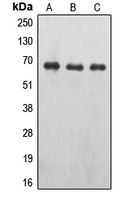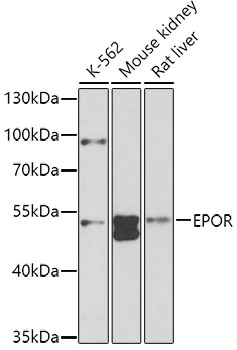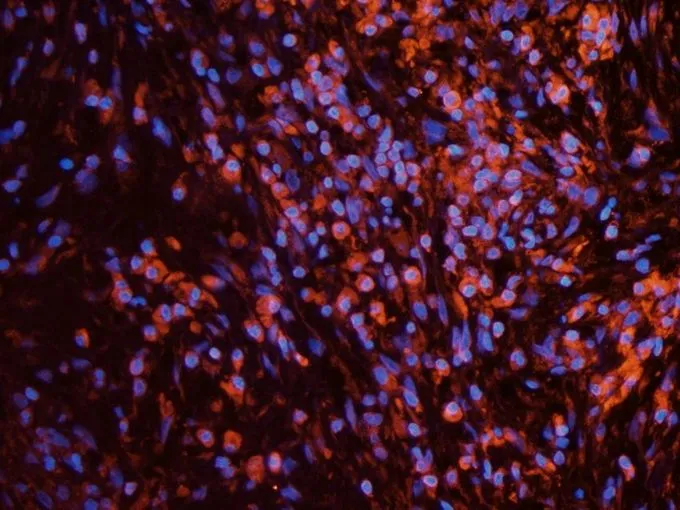
WB analysis of A498 (A), pervanadate-treated MCF7 (B), NIH3T3 (C) whole cell lysates using GTX32177 EPO receptor (phospho Tyr426) antibody.
EPO receptor (phospho Tyr426) antibody
GTX32177
ApplicationsWestern Blot
Product group Antibodies
TargetEPOR
Overview
- SupplierGeneTex
- Product NameEPO receptor (phospho Tyr426) antibody
- Delivery Days Customer9
- Application Supplier NoteWB: 1:500 - 1:1000. *Optimal dilutions/concentrations should be determined by the researcher.Not tested in other applications.
- ApplicationsWestern Blot
- CertificationResearch Use Only
- ClonalityPolyclonal
- ConjugateUnconjugated
- Gene ID2057
- Target nameEPOR
- Target descriptionerythropoietin receptor
- Target synonymsEPO-R, erythropoietin receptor
- HostRabbit
- IsotypeIgG
- Protein IDP19235
- Protein NameErythropoietin receptor
- Scientific DescriptionThis gene encodes the erythropoietin receptor which is a member of the cytokine receptor family. Upon erythropoietin binding, this receptor activates Jak2 tyrosine kinase which activates different intracellular pathways including: Ras/MAP kinase, phosphatidylinositol 3-kinase and STAT transcription factors. The stimulated erythropoietin receptor appears to have a role in erythroid cell survival. Defects in the erythropoietin receptor may produce erythroleukemia and familial erythrocytosis. Dysregulation of this gene may affect the growth of certain tumors. Alternate splicing results in multiple transcript variants.[provided by RefSeq, May 2010]
- Storage Instruction-20°C or -80°C,2°C to 8°C
- UNSPSC12352203



![IHC-P analysis of formalin fixed human placenta tissue using GTX52483 EPO receptor antibody [MM0031-6G7]. Proteinase K pretreatment is required.](https://www.genetex.com/upload/website/prouct_img/normal/GTX52483/GTX52483_20191119_IHC-P_w_23060900_478.webp)
![WB analysis of human placental tissue lysate using GTX52803 EPO receptor antibody [6A33].](https://www.genetex.com/upload/website/prouct_img/normal/GTX52803/GTX52803_20191119_WB_w_23060900_613.webp)


